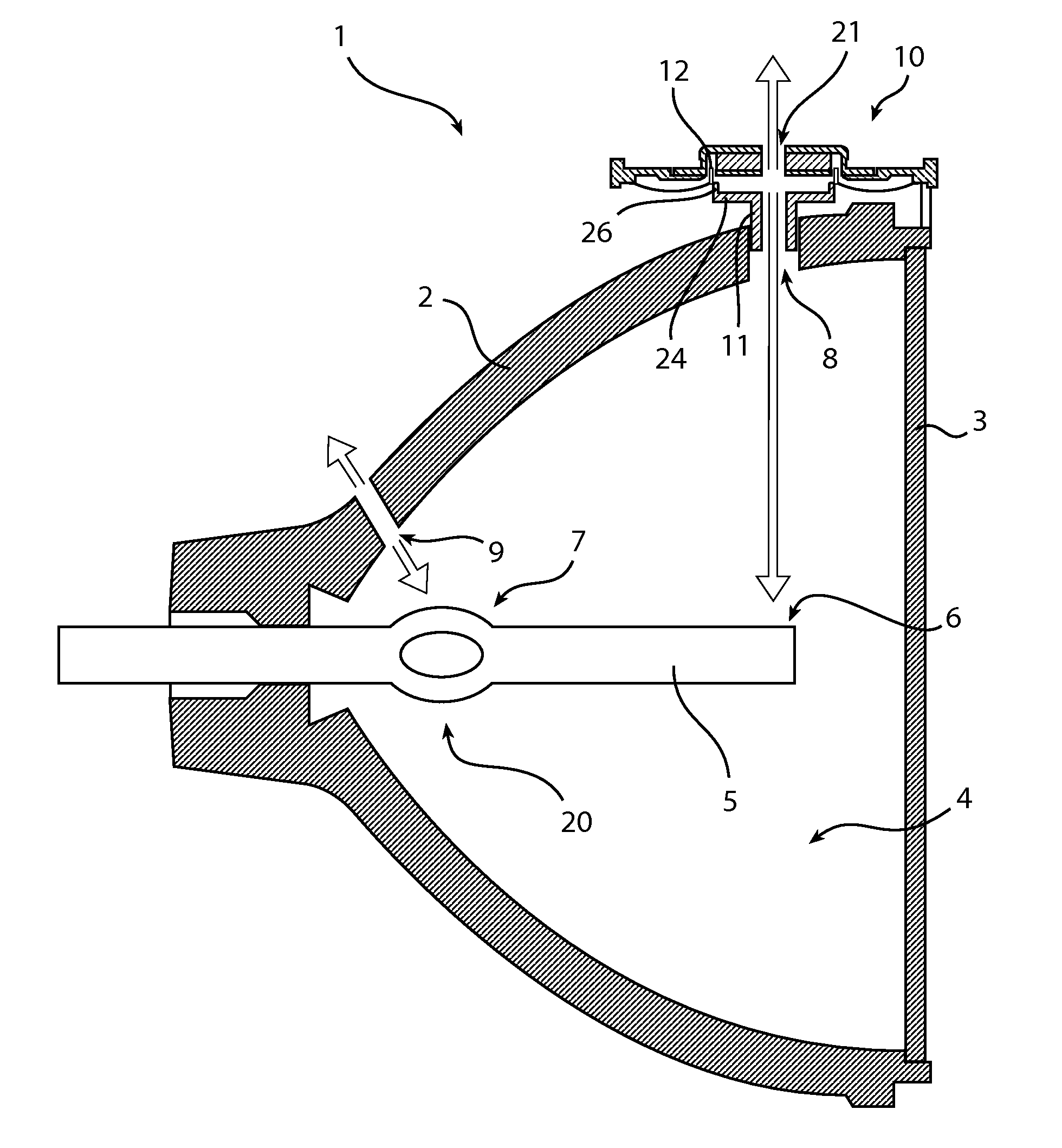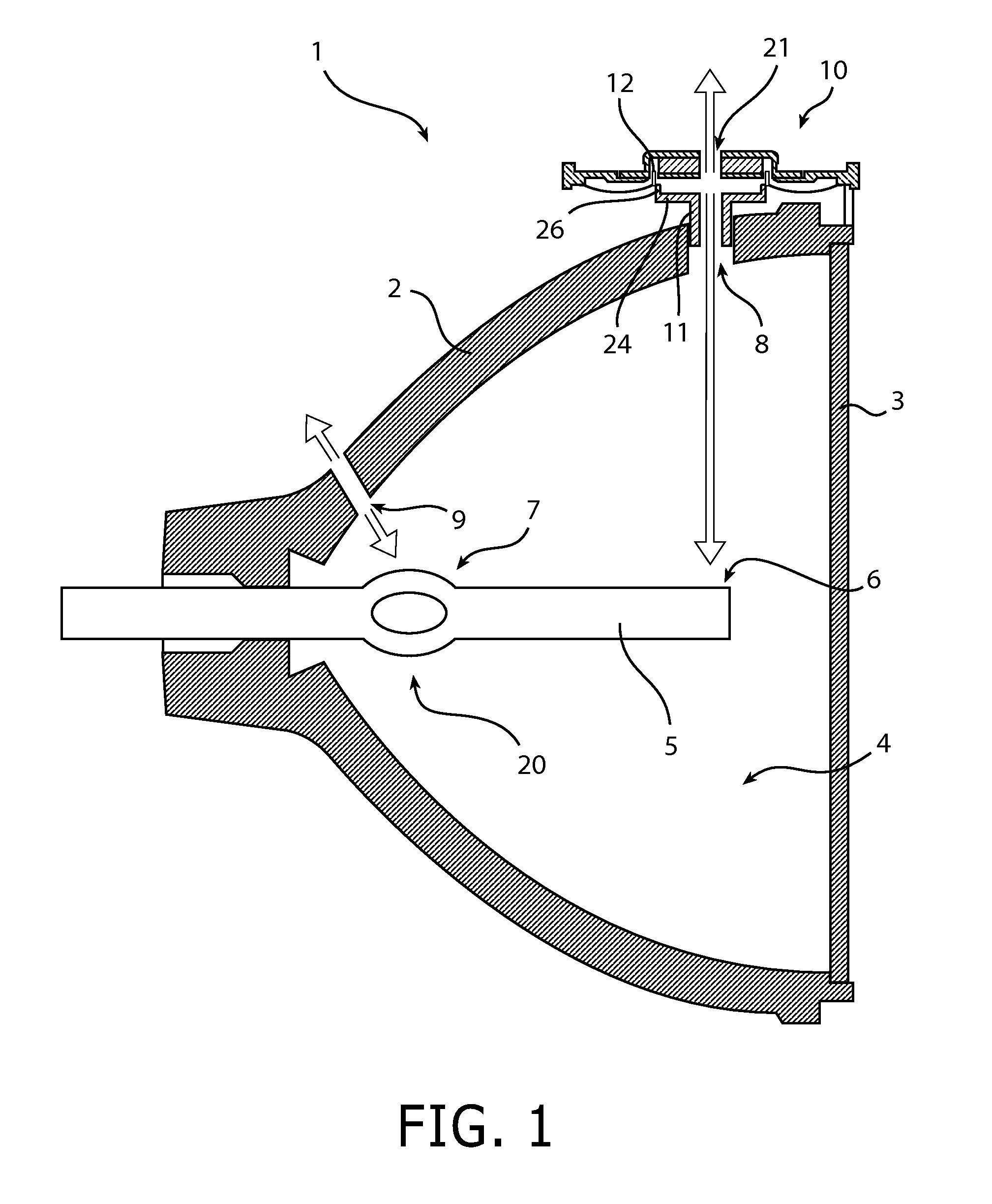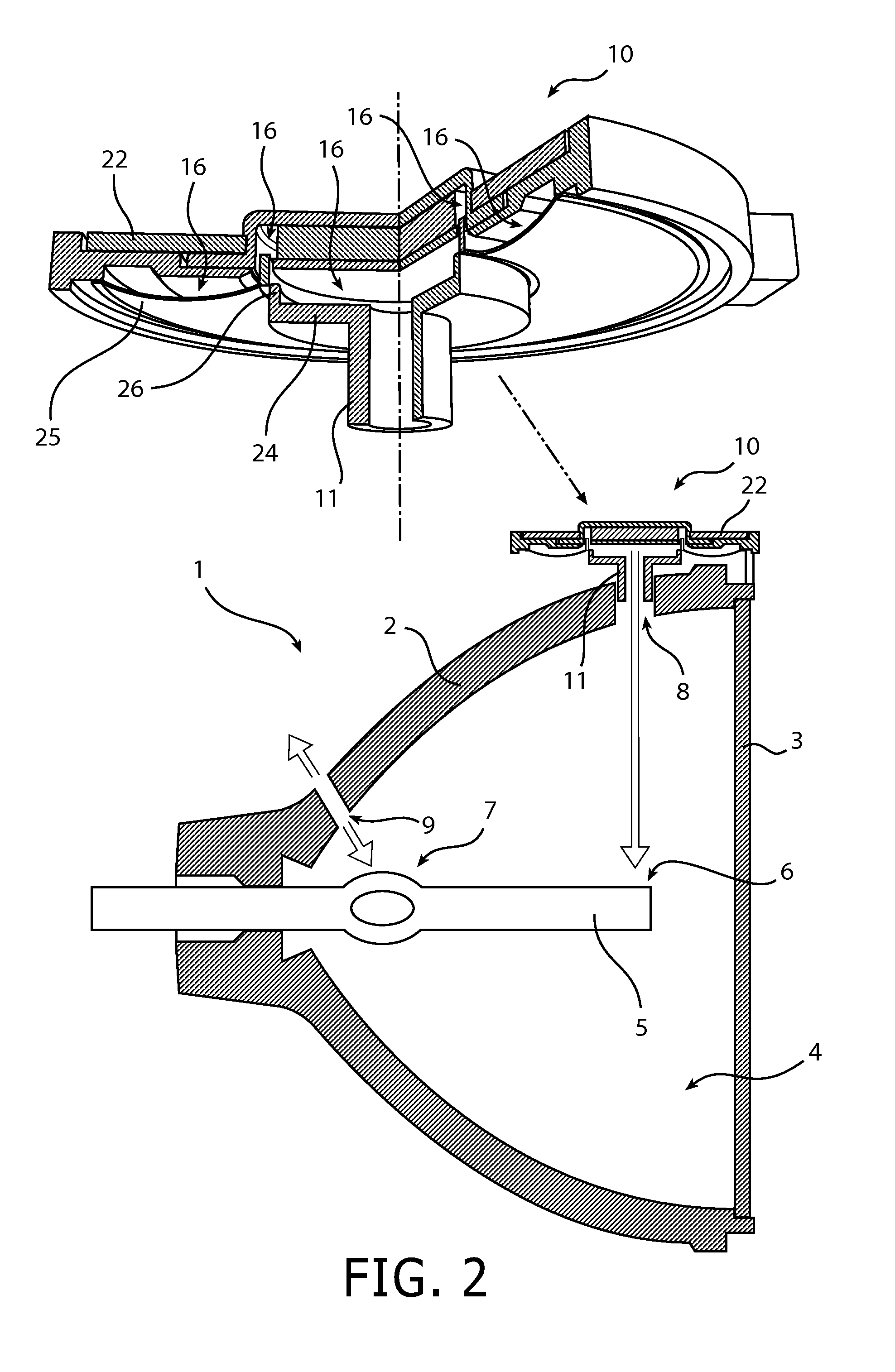Cooling device utilizing internal synthetic jets
- Summary
- Abstract
- Description
- Claims
- Application Information
AI Technical Summary
Benefits of technology
Problems solved by technology
Method used
Image
Examples
Embodiment Construction
[0034]FIG. 1 illustrates an embodiment of the present invention for cooling of an Ultra High Performance (UHP) lamp 1. The UHP lamp 1 comprises a paraboloid reflector 2, and a front glass 3 airtight attached to the reflector 2 thereby forming an enclosure 4. The reflector 2 is here made of glass and has a reflective interior surface. A quartz burner 5 can be arranged inside the UHP lamp 1. For a typical UHP lamp 1, there is a first hot spot 6 located at the front pinch of the quartz burner (i.e. the end of the quartz burner closest to the front glass), and a second hot spot 7 located in the middle of the quartz burner (i.e. halfway between the ends of the quartz burner). Note that, provided that the quartz burner is horizontally arranged, the heat distribution at the middle of the quartz burner is such that the second hot spot 7 is located in the upper part thereof, whereas a cold spot 20 will form in the lower part thereof.
[0035]To prevent immanent crystallization these hot spots 6...
PUM
 Login to View More
Login to View More Abstract
Description
Claims
Application Information
 Login to View More
Login to View More - R&D
- Intellectual Property
- Life Sciences
- Materials
- Tech Scout
- Unparalleled Data Quality
- Higher Quality Content
- 60% Fewer Hallucinations
Browse by: Latest US Patents, China's latest patents, Technical Efficacy Thesaurus, Application Domain, Technology Topic, Popular Technical Reports.
© 2025 PatSnap. All rights reserved.Legal|Privacy policy|Modern Slavery Act Transparency Statement|Sitemap|About US| Contact US: help@patsnap.com



